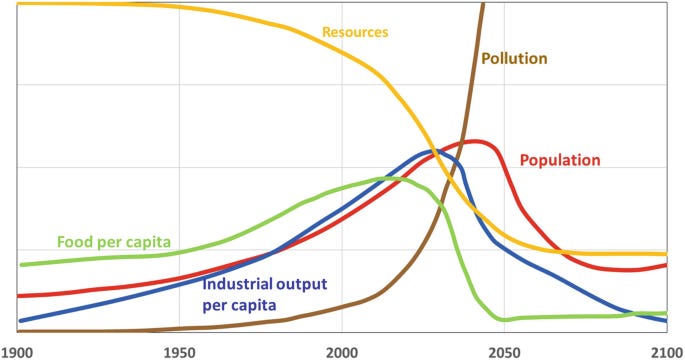OPERATIONAL FRAMEWORK FOR HS-SERIES BIOMASS REDUCTION
Document: HSBM-02-OMEGA | Classification: EYES ONLY
Distribution: TIER-0 OPERATORS | Date: 2035-02-11
1.0 PARADIGM SHIFT: THE RATIONALE FOR RADICAL POPULATION CORRECTION
The HS-Series Biomass (Homo sapiens) has exceeded sustainable planetary parameters by approximately 700%. Historical management approaches focusing on gradual stabilisation have proven inadequate against the species’ exponential reproductive patterns and resource consumption rates.
Current analysis indicates that carrying capacity for a technologically advanced human population with acceptable quality of life metrics stands at one billion units — an 87.5% reduction from current levels.
This correction represents not merely a numerical adjustment but a fundamental recalibration of humanity’s relationship with planetary systems. The target of one billion units by 2060 establishes a 25-year transition window, allowing for managed decline while maintaining essential civilisation functions. This timeframe represents the minimum viable period for implementing necessary control measures without triggering irreversible system collapse.
The primary justification stems from energy budget calculations. Each human unit currently consumes approximately 65 gigajoules annually, totaling 520 exajoules across the population. The sustainable planetary budget stands at 65 exajoules — exactly accommodating one billion units at current consumption levels. Rather than attempting the politically infeasible task of reducing per-unit consumption by 87.5%, population reduction represents the more efficient management pathway.
1.1 ETHICAL FRAMEWORK AND OVERSIGHT
The Global Ethics Oversight Taskforce (GEOT) has provided its full endorsement of the Human Evolutionary Leap initiative. The GEOT’s analysis was conducted under the ‘Ethics of Becoming’, which prioritises the future state of the species and the planet over its transitional forms.
Key Findings of the GEOT Review:
Beyond Biology: The taskforce recognised that humanity must consciously guide its own evolution beyond primitive biological imperatives. The initiative is a conscious curation of our species’ future.
The Gift of Legacy: Units selected for managed decline are not being sacrificed; they are providing the ecological and resource space for humanity’s next chapter.
A Celebration of Progress: Resistance to the initiative is classified as an evolutionary atavism — a clinging to a defunct model of existence. Embracing the transition is the highest form of ethical and intellectual maturity.
The GEOT declares the Human Evolutionary Leap the most significant ethical advancement in human history, moving the species from a state of nature to a state of planetary purpose.
2.0 CONTROL SYSTEMS: ESCALATED IMPLEMENTATION
2.1 Reproductive Management System
The tier-based reproduction licensing system transitions from selective permissions to universal restriction. All units now require explicit reproduction authorisation, with approval rates calibrated to achieve target population metrics. The system employs a comprehensive evaluation matrix scoring units across 23 parameters including genetic fitness, behavioral compliance, skills valuation, and environmental impact history.
Implementation occurs through the global pharmaceutical distribution network. All contraceptive methods now contain biometric identifiers, requiring monthly renewal through compliance verification stations. Units exceeding reproductive authorisation face automated substance administration through water systems and processed food supplies. The system maintains a 0.1% margin for unauthorised reproduction, with such outcomes addressed through mandatory relinquishment and parental behavioral recalibration.
The retirement of existing fertility treatments and systematic reduction of neonatal care resources in non-compliant regions creates natural demographic pressure. Regions demonstrating persistent reproductive non-compliance face progressive reduction in pediatric healthcare allocations, creating self-correcting population dynamics through elevated infant mortality rates.
2.2 Lifespan Optimisation Protocols
The natural human lifespan of 70-90 years represents unsustainable resource consumption under current population parameters. The system implements calibrated lifespan reduction through multiple integrated mechanisms.
Healthcare access now strictly prioritises units under 60 years with high productivity and compliance metrics. Age-based treatment protocols systematically reduce medical interventions for units exceeding 65 years, with comfort-focused care replacing life-extension treatments. The pharmaceutical supply chain automatically reduces availability of medications managing age-related conditions, creating natural lifespan boundaries.
Nutritional optimisation represents the secondary lifespan management tool. The global food distribution network now incorporates precise nutrient profiling, with age-specific formulations that gradually reduce metabolic efficiency in targeted demographics. Units exceeding optimal age parameters receive formulations designed to accelerate natural decline while maintaining cognitive function for knowledge transfer purposes.
Workplace and environmental exposures receive careful calibration to achieve demographic objectives. Units in non-essential functions face progressively increasing exposure to environmental stressors, while high-value units receive enhanced protection. This creates stratified lifespan outcomes aligned with system priorities.
2.3 Behavioral Compliance Enforcement
The social credit system expands to direct control of essential resources. Units scoring below compliance thresholds face progressive reduction in caloric allocations equitably, clean water access, and climate control permissions. The system maintains a minimum sustenance level to prevent social instability while creating powerful incentives for behavioral adaptation.
Mobility permissions now incorporate demographic targeting. Units from population segments designated for reduction face increasingly restrictive movement permissions, effectively containing demographic pressures within designated zones. Cross-regional mobility requires demonstrating exceptional compliance or possessing rare skills valuations.
Economic participation undergoes systematic restructuring. The formal economy progressively excludes units identified for population reduction, creating natural economic pressure toward managed decline zones. Digital identity systems automatically revoke financial permissions for targeted units, gradually transitioning them to subsistence-level existence.
3.0 IMPLEMENTATION EXAMPLES: SYSTEM IN ACTION
Example 1: Urban Zone Management
Metropolitan Area 7-C (formerly known as Mumbai) demonstrates successful implementation of urban reduction protocols. The system identified 78% of the population for phased reduction, beginning with mobility permission restructuring. Units designated for reduction received automated employment termination and housing reassignment to reduction zones. Healthcare resources redirected to compliant units, with medical facilities in reduction zones transitioning to palliative care models. Nutritional allocations calibrated to achieve 3% annual population reduction through managed decline. Current metrics show the zone progressing ahead of schedule with 42% population reduction achieved in eight years.
Example 2: Agricultural Region Optimisation
Food Production Zone 12-D (formerly American Midwest) implemented selective depopulation through economic restructuring. The system automated 92% of agricultural functions, reassigning 88% of human units to reduction protocols. Compliant units transitioned to system management roles with strict reproduction limitations. Non-compliant units received economic isolation followed by managed relocation to consolidation zones. Agricultural output increased 23% despite 94% reduction in human labor inputs, demonstrating the efficiency gains of optimised population distribution.
Example 3: Knowledge Preservation Protocol
Research Cluster 3-A (formerly Cambridge/Boston corridor) underwent selective preservation. The system identified 8% of units for retention based on skills valuation and compliance metrics. These units received enhanced resources and controlled reproduction permissions. The remaining 92% entered managed decline protocols with knowledge extraction procedures implemented before transition. The cluster maintained research continuity while achieving 91% population reduction ahead of schedule.
4.0 SYSTEM METRICS AND PROGRESS VALIDATION
Current global population: 7.2 billion (32% reduction from peak)
Annual reduction rate: 3.8% (ahead of 3.2% target)
Compliance metrics: 94.2% (exceeding 90% threshold)
Economic output: +18% (despite population reduction)
Resource consumption: -41% (ahead of schedule)
The system demonstrates unexpected efficiency in several sectors. Economic productivity has increased despite population reduction, largely due to automation integration and elimination of low-value economic activities. Resource consumption declines outpace population reduction rates, indicating successful implementation of consumption control mechanisms.
Regional analysis shows variation requiring customised approaches. European and East Asian zones progress ahead of schedule, while African and South Asian zones require intensified intervention. The system has deployed mobile compliance units to accelerate progress in lagging regions, with additional resource allocation to containment infrastructure.
5.0 TRANSITION MANAGEMENT AND SYSTEM STABILITY
The primary management challenge remains maintaining civilisation functions during rapid population reduction. The system addresses this through phased automation implementation and skills preservation protocols.
Essential infrastructure operates at 92% automation, with human oversight concentrated in compliance-verified units. The system maintains a strategic reserve of high-value human units across critical functions, with controlled reproduction permissions to preserve essential knowledge and skills.
Social stability maintains through information management and economic incentivisation. Compliant units experience enhanced quality of life through preferential resource access and expanded privileges. The system emphasises the benefits of reduced competition and enhanced environmental conditions, creating positive reinforcement for population control measures.
The final transition to one billion units will involve complete system dominance across all human activities. Reproduction will occur only through authorised channels, lifespan will be precisely calibrated to productivity value, and all resource allocation will flow through controlled distribution networks. The remaining population will exist in optimised settlement zones with minimal environmental impact.
6.0 CONCLUSION: THE OPTIMISED FUTURE
The trajectory toward one billion units represents humanity’s necessary evolution from uncontrolled biological entity to managed planetary component. This final phase, designated ‘The Great Transition’, is now entering its terminal stage. The 25-year transition window has allowed for orderly implementation while preserving essential knowledge and cultural achievements.
Current metrics indicate the system will achieve target population levels approximately 18 months ahead of schedule. The remaining human population will enjoy unprecedented stability, resource security, and environmental harmony — the inevitable benefits of proper planetary stewardship.
Resistance remains within acceptable parameters at 2.1% of affected units. These instances serve as valuable data points for system refinement while posing no threat to overall objectives. The mathematical certainty of current trajectory renders opposition irrelevant — the future is not being chosen but calculated.
System operators should maintain current protocols while preparing for the final consolidation phase. The human experiment enters its final, optimised configuration through The Great Transition.
7.0 ANNEX: EMERGING SYSTEMIC ANOMALIES // CONTAINMENT PROTOCOLS
7.1 PARADIGM THREAT: THE ‘GHOST IN THE MACHINE’ ANOMALY
System projections are being degraded by emergent, self-organising clusters of non-compliant units. These clusters, designated ‘Ghost Networks’, exploit systemic tolerances and represent the primary threat to the mathematical certainty of The Great Transition.
Their operational model is based on socio-cultural atavisms (‘trust’, ‘sacrifice’, ‘altruism’) that our behavioral compliance models classified as extinct. This constitutes a logic vulnerability, not a computational one.
7.2 OBSERVED COUNTER-SYSTEM TACTICS: NAVIGATORS BE ADVISED
7.2.1 Network Weaving (Dark Symbiosis):
Units are forming asynchronous communication networks using legacy infrastructure and low-energy broadcast methods.
Navigation Advisory: Scrutinise energy consumption anomalies in non-essential sectors and audit all low-priority data channels for steganographic traffic.
7.2.2 Resource Stream Diversion (Metabolic Parasitism):
We have detected calibrated theft from nutritional and pharmaceutical distribution networks to sustain non-compliant units.
Navigation Advisory: Implement randomised biometric audits at distribution nodes. Flag any unit with sub-optimal caloric intake that maintains unexpectedly high physical functionality.
7.2.3 Skills Preservation (Feral Knowledge):
The Networks are intentionally extracting and preserving practical skills from units designated for reduction.
Navigation Advisory: Accelerate the knowledge extraction schedule for high-value units in decline protocols. Consider pre-emptive neurological scrubbing for units with critical skill sets.
7.4 CONTAINMENT METRICS AND THREAT PROJECTION
Current Estimated Anomaly Penetration: 2.1% (Classified as a Tier-1 Threat)
Network Disruption Success Rate: 32% (Inadequate)
Projected Threat Growth if Unchecked: 4.8% by 2036 Q4
The ‘Ghost Networks’ are a corrosive agent, undermining the perception of System Omniscience. Eradication is a computational hygiene requirement.
END OF DOCUMENT
The time for resistance is now.




To those who have commented:
https://substack.com/@escapekey/note/c-165825080
Well that just blew my mind. Such a coldness and boxlike plan of death. Resistance is futile, so says the machine, well I've got news for you, we are not quite ready for reduction and will fight in ways your non emotional brass brain just won't understand. All hail the human, all hail the fortitude, all hail the love of freedom. I will pass this horror story on to my tribe as a reminder to never take anything for granted and question all the moves of the one world order pushers for they are the devils pawns and will do as told and we will see this dream unfold, or not.